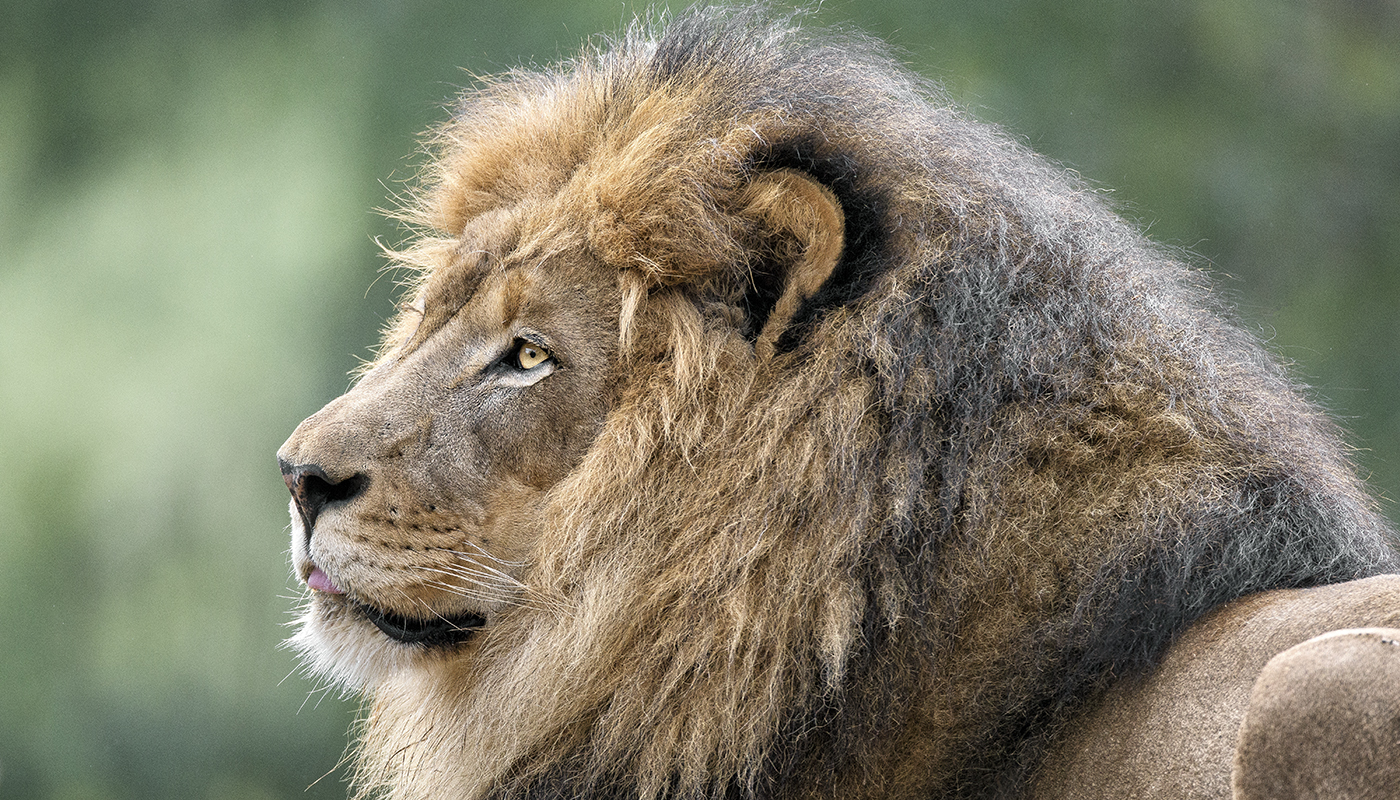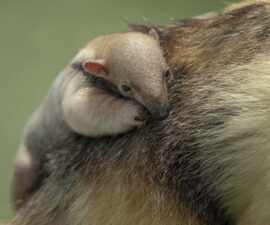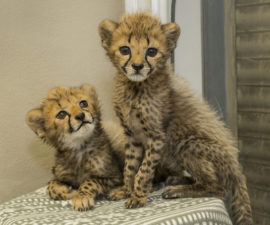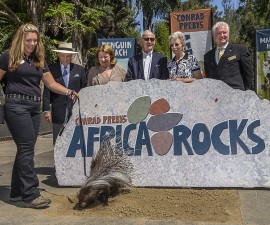They’re not the biggest living cats (tigers take that title), yet they have loomed large in human culture for centuries. What is it about lions that grips the human imagination?
BY Wendy Perkins
Photography by Ken Bohn
It likely began with their powerful presence, and our fascination is revealed in the numerous depictions of lions in art as well as on shields, banners, flags, and countless bits of ephemera. It’s a reverence that continues today. But our lionization (we even invoke them to indicate ultimate admiration) transcends the physical to include the intricacies of their lifestyle and very being.
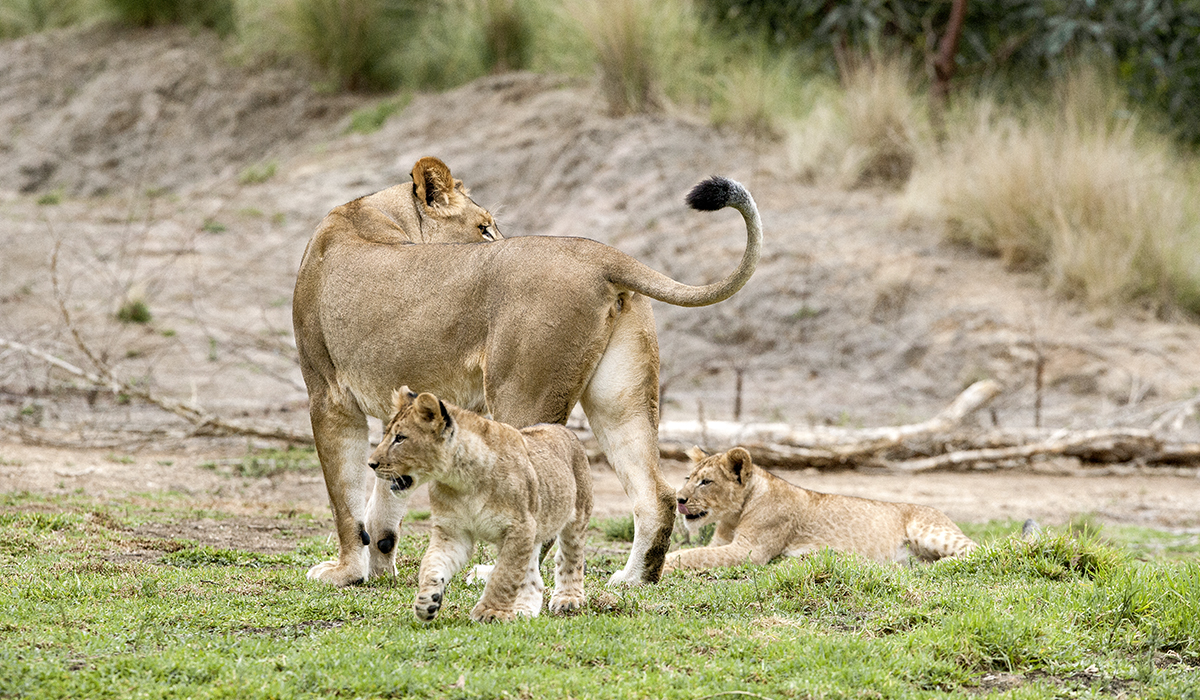
 Although lions get most of their moisture from their prey, a water source is an important part of their territory; it draws prey to a good ambush spot.
Although lions get most of their moisture from their prey, a water source is an important part of their territory; it draws prey to a good ambush spot.
A Cat Like No Other
You may have heard the lion Panthera leo referred to as the “King of the Jungle”—but that’s an ironic name, because lions aren’t found in that dense, tangled type of habitat. They are, however, one of the rulers of grasslands, open woodlands, and scrublands. They may have inhabited other biomes in the past; lions as we know them once thrived in Europe, Asia, India, and Africa. Today, there are two recognized subspecies, Panthera leo leo and Panthera leo melanchaita. There are between 17,000 and 19,000 of the leo subspecies scattered across southern and eastern Africa; there are only about 1,400 of the endangered melanchaita subspecies left, which live in small African populations and one population under human protection in India’s Gir Forest.
Compared to other members of the big cat genus Panthera—tigers, leopards, and jaguars—lions stand out both physically and behaviorally. They are the only cat with a tufted tail, as well as the sole feline species to display dramatic sexual dimorphism: regally ruffed males are easily distinguished from sleek females. And, of course, lions are the only cats that live in large social groups.
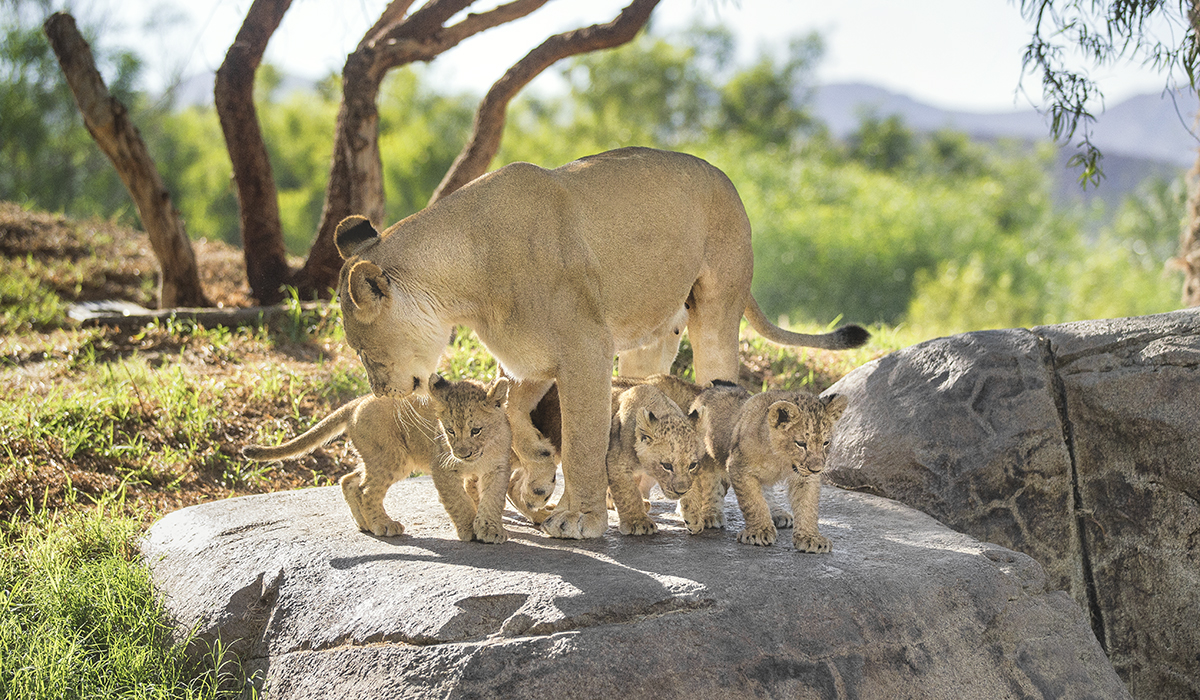
Point of Pride
Most people today know that a group of lions is called a pride, but that wasn’t always the case. Although humans shared habitat with these social cats for thousands of years, the first evidence of a name for a group of lions doesn’t show up until the 15th century, and it wasn’t common until the 1930s. Why a “pride”? The official reasoning is lost to the ages, but the sight of a group of lions striding along together does seem to embody the confidence and satisfaction the word conveys.
A pride is made up of lionesses (mothers, sisters, and cousins) and their cubs, a few related sub-adult males, and, of course, the reigning adult male. The size of the group can vary depending on location, usually numbering 3 to 30 individuals. In dry areas with less prey, prides are smaller; habitats with more food and water allow for the survival of more members.
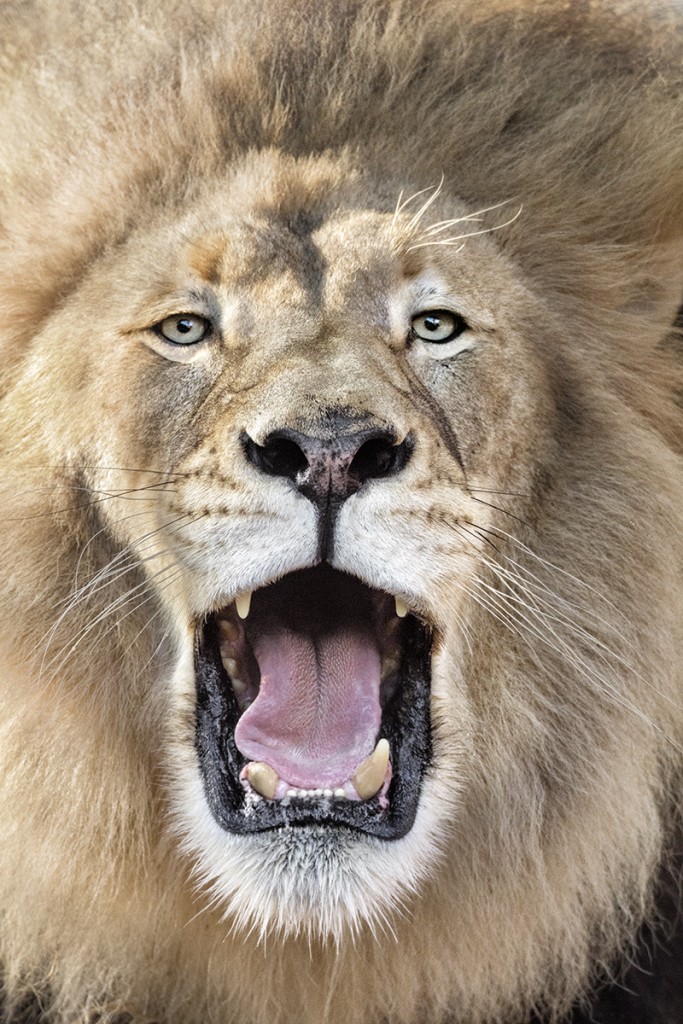
GOOD SIGHT, GOOD BITE
Excellent vision and 2.5-inch-long canine teeth contribute to the lion’s renowned hunting ability.
It isn’t uncommon to come across lions that do not live in prides, though. Called nomads, they range far and wide while following migrating herds of large game. They are generally young males, roaming in pairs or small groups and often related to one another, but female nomads exist, too.
Related lionesses, especially the older ones, usually live together. Adult males, however, may only stay with a pride for two to three years. During that time, their main job is to defend the pride’s territory—its pantry, so to speak. The pride spends the day’s hottest hours resting. At nightfall, they disperse: females to hunt, and males to patrol and protect the boundaries of the domain. There are almost always unaffiliated male lions looking to take over a group of females. If the newcomers are able to vanquish the reigning males, they win the pride.
The lionesses work together to hunt and rear the cubs. This cooperation streamlines their survival: they get the most from their hard work, increasing the odds of keeping everyone healthy and safe. The division of labor between males and females makes sense, as lionesses are smaller, lighter, more agile, and faster sprinters than males.
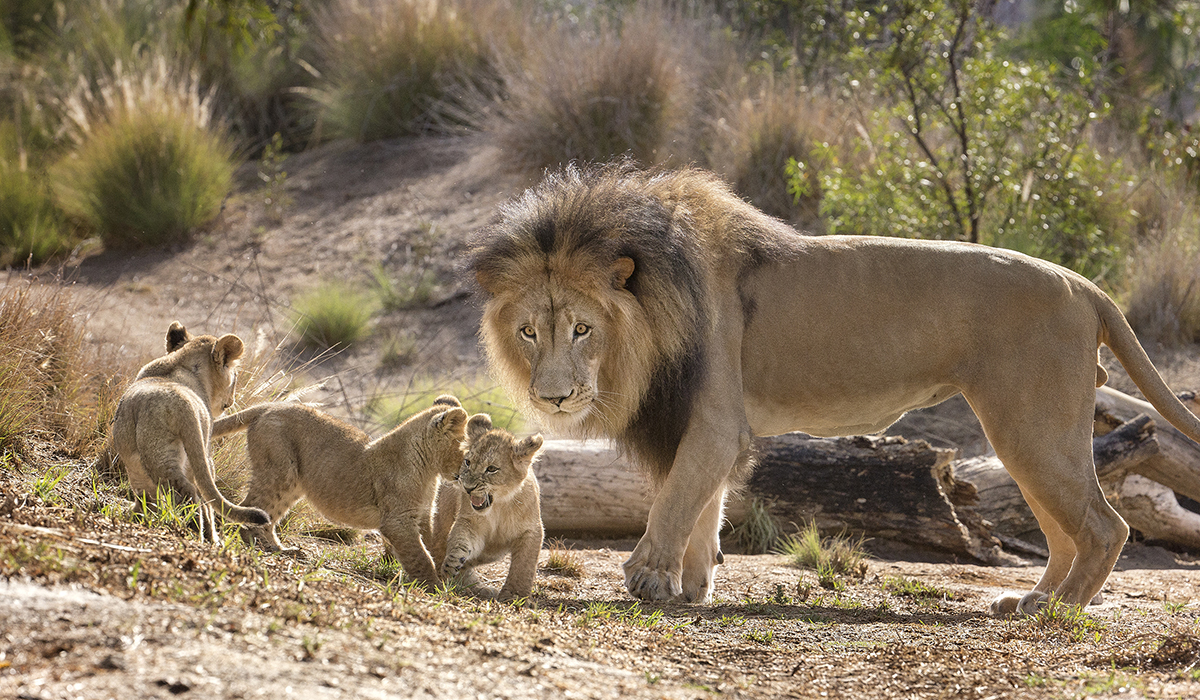
Feeding the Family
Hunting as a group increases the odds of a successful hunt; there is a better chance that the lions have food when they need it. While hunting, smaller females typically chase prey toward the center of the group. The larger and heavier lionesses ambush or capture the prey. Lionesses are versatile and can switch jobs, depending on which females are hunting that day and what kind of prey they are stalking.
Females—and even males—do sometimes hunt on their own. Generally, this approach yields smaller prey, such as a warthog or Thomson’s gazelle. The big prize, however, takes teamwork. An adult male can eat nearly 90 pounds of meat at a single meal, so bigger prey yields a better return on investment.
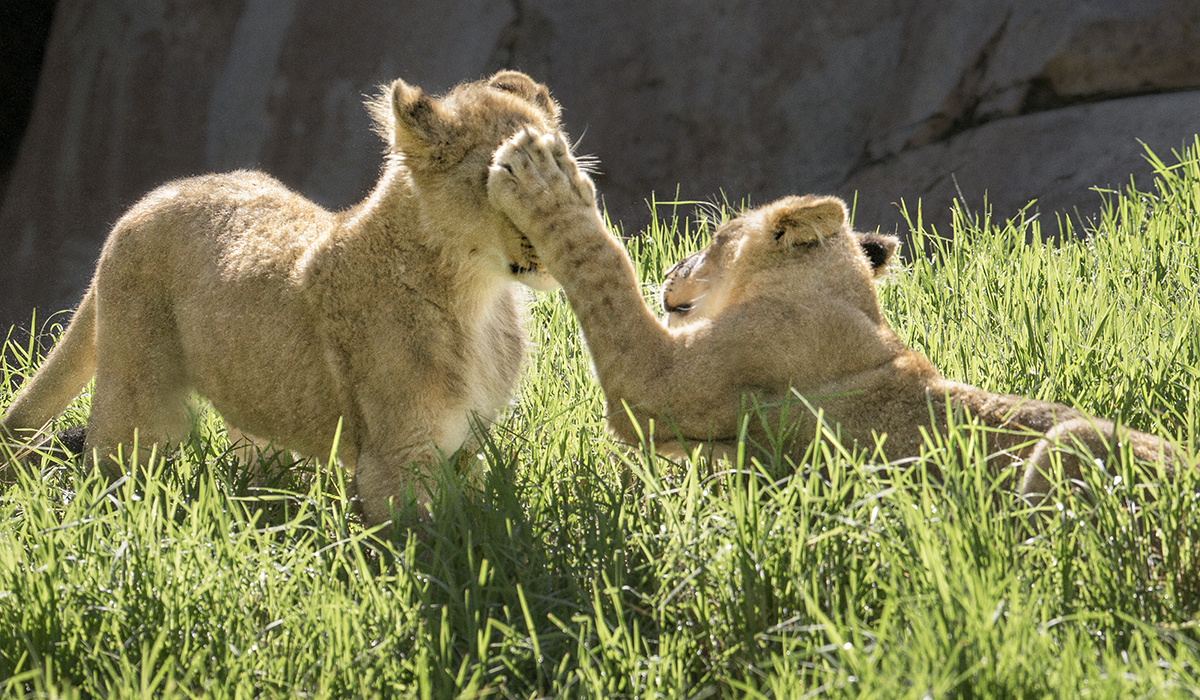
Club Cub
Females in a pride often give birth around the same time, but not in the same location. A lioness typically finds a secluded spot away from the group to give birth. She keeps the cubs hidden for the first four to six weeks of their life, leaving them only to find food. Once she brings them into the presence of the pride, they not only have plenty of playmates, they have many “mothers.” Adult females will nurse any cub in the pride, not just their own. This extra attention is a significant advantage—cubs born in a pride are twice as likely to survive as those born to a nomad lioness.
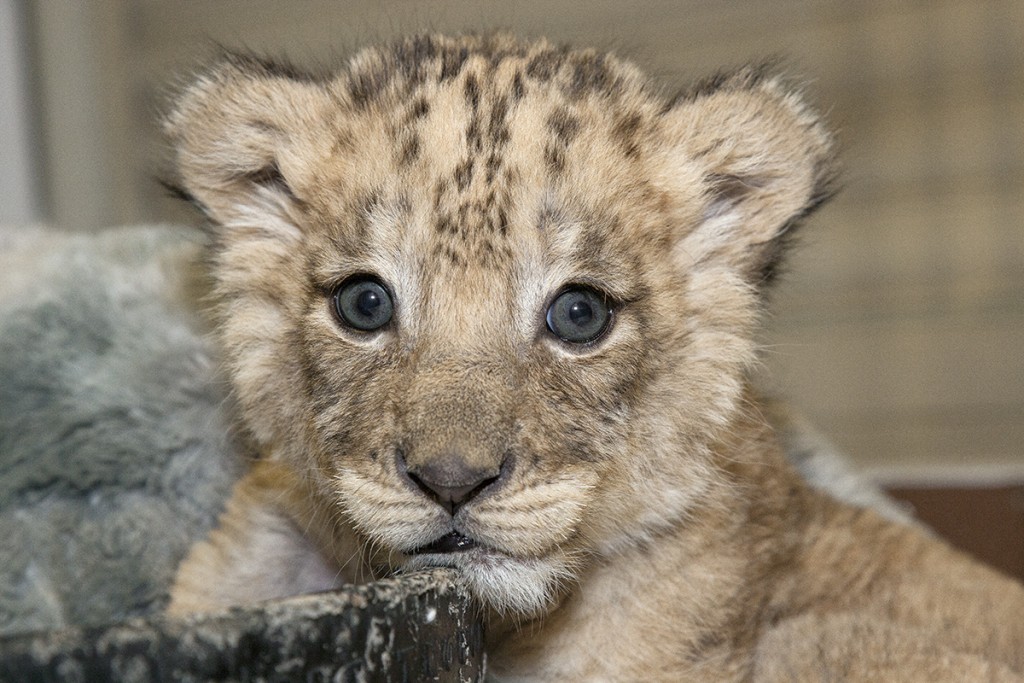
SEEING SPOTS
Cubs have spotted coats until three months of age.
At three months old, cubs follow their mother wherever she goes, and they are weaned by the age of six months. How long a lion cub stays with its mother depends on the sex of the cub. Mothers generally raise males until they are about two years old; then at that stage, the mother usually runs them out of the pride. Female cubs often stay with the pride, and a mother and daughter may live together for life. However, as the pride continues to grow, it may split up into smaller groups that share a territory but don’t spend much time together.
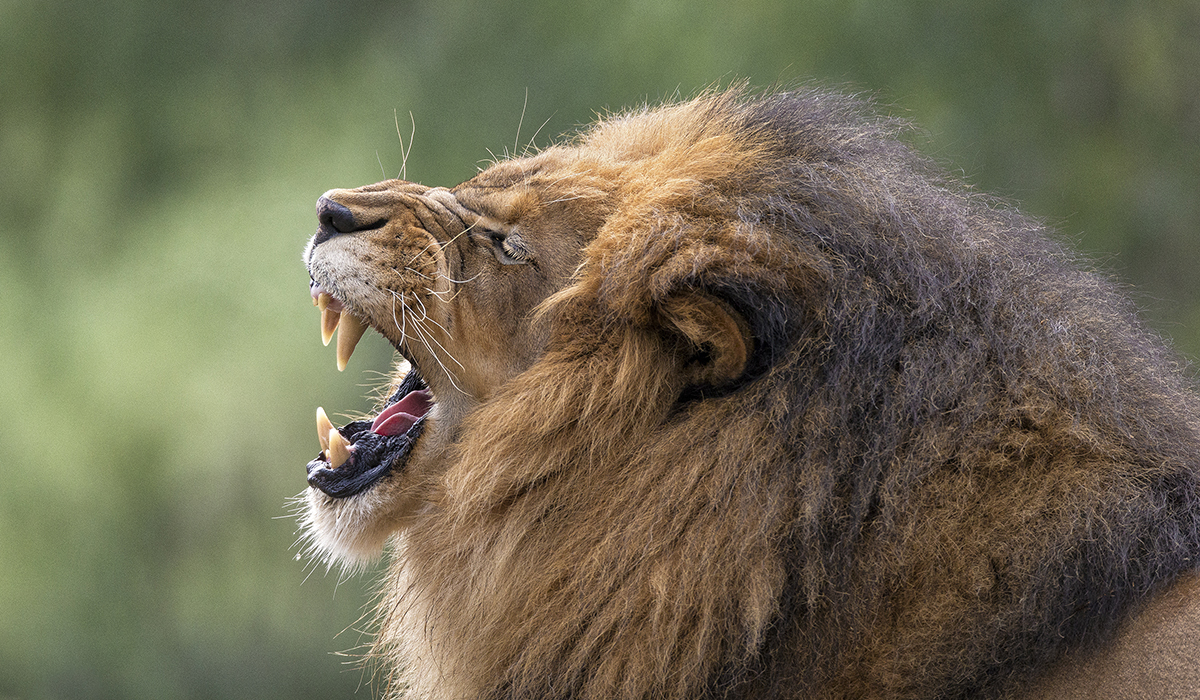
 A sampling of ways
A sampling of ways
to say “lion”
Löwe (German)
Simba (Swahili)
Igonyama (Xhosa,Zulu)
León (Spanish)
Tau (Sotho)
Shumba (Shona)
Zaki (Hausa)
That Roar…and More
Lions are famous for their mighty roar. Under the right conditions, the sonorous call can be heard up to three miles away and mostly serves to announce territorial ownership. Most people base their imitation of a lion’s roar on what they’ve heard in movies and television. Yet, this cat’s vocal signature is not just a single vocalization, but rather a sequence.
The lion’s iconic call begins with a few fairly soft sounds that increase in volume, frequency, and duration until the full roar is realized. After about 40 seconds, the sounds begin to decrease, ending in a series of grunts. Males are able to roar when they are about one year old, and females can roar a few months later.
Lions use their roar as one form of communication. It identifies individuals, strengthens the pride’s bond, and lets other animals know the pride’s domain. Other sounds lions produce include growls, snarls, hisses, meows, grunts, and puffs, which sound like a stifled sneeze and are used in friendly situations.
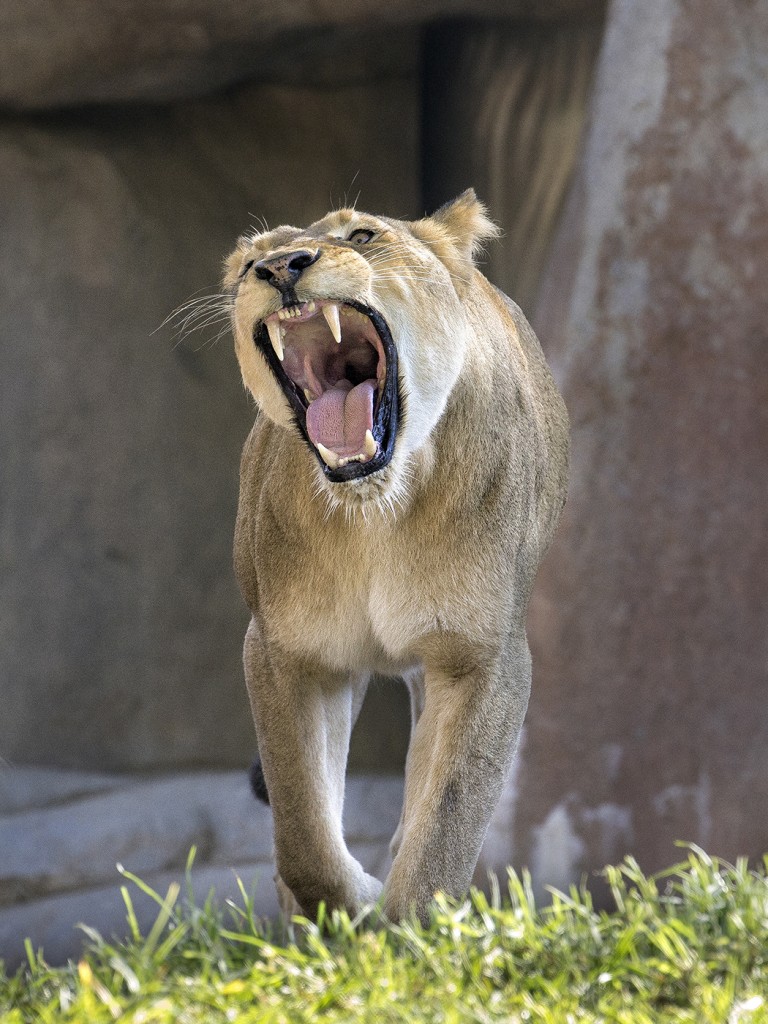
THEY CAN HEAR YOU NOW
Under the right conditions, a lion’s roar can be heard three miles away.
Lions usually roar at dawn and dusk to communicate with pride members that might be in a different part of the territory. While the lions at the San Diego Zoo and the Safari Park have their pride mates close at paw, they instinctively let loose and sound off to any ears in the area. Anyone nearby can’t help but be impressed—it’s a call not only heard but felt! See if you experience the roar on your next visit.

